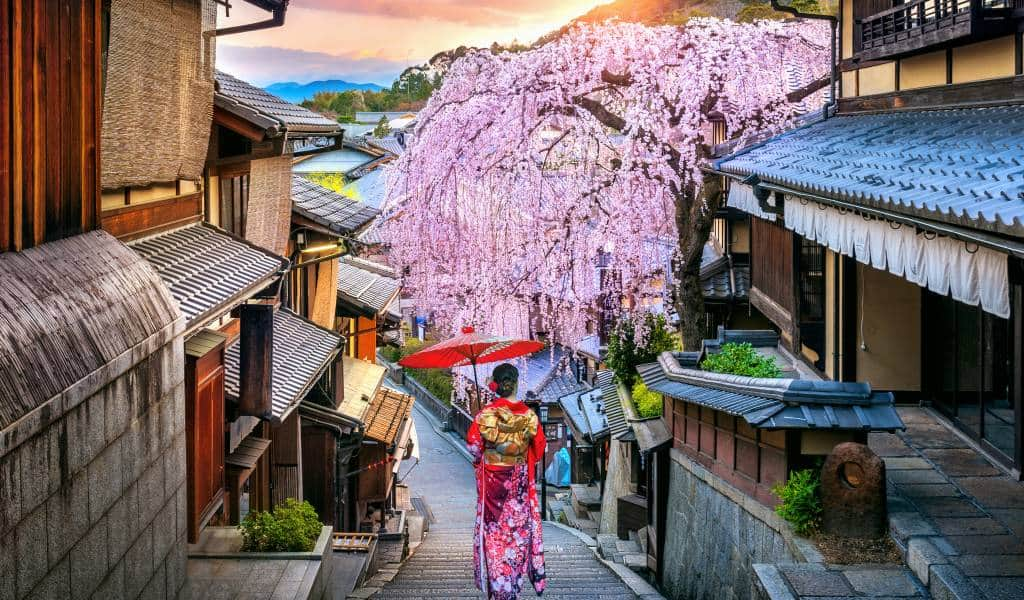Sustainable Serenity in Kyoto
Kyoto, the heart of traditional Japan, is also a model for sustainable tourism. Here’s your guide to a responsible visit:
- Historic Temples: Visit the famous Kinkaku-ji (Golden Pavilion) and Fushimi Inari Shrine. Choose eco-friendly tour operators that respect and preserve these sacred sites.
- Learn about the history and cultural significance of these temples from knowledgeable guides.
- Participate in temple clean-up activities and support preservation efforts.
- Green Tea Ceremonies: Experience an authentic Japanese tea ceremony at an organic tea farm. Learn about sustainable tea farming practices and the cultural significance of tea in Japan.
- Visit tea plantations that prioritize organic farming and sustainable practices.
- Enjoy a peaceful tea ceremony while appreciating the natural beauty of the surroundings.
- Nature Walks: Take a serene walk through the Arashiyama Bamboo Grove. The grove is a testament to the beauty of natural preservation and offers a peaceful escape from urban life.
- Explore other nature trails in Kyoto, such as the Philosopher’s Path and the Kamo River.
- Enjoy the changing seasons and the stunning landscapes that Kyoto has to offer.
- Sustainable Dining: Kyoto is home to many restaurants that focus on sustainable and organic ingredients. Try Shojin Ryori, a traditional vegetarian cuisine enjoyed by monks.
- Dine at restaurants like Hyotei and Kikunoi, which use seasonal and locally sourced ingredients.
- Experience the harmony of flavors and the balance of a sustainable diet.
- Eco-Friendly Accommodations: Stay at traditional ryokans that prioritize sustainability, such as Hoshinoya Kyoto.
- These ryokans offer a unique cultural experience while minimizing their environmental impact.
- Enjoy the tranquility and beauty of Kyoto while staying in eco-friendly accommodations.
Insight: Kyoto’s commitment to preserving its natural and cultural heritage makes it a perfect destination for those seeking sustainable and mindful travel experiences.


































![Why [City/Region] Is a Foodie’s Paradise: Exploring the Local Cuisine Scene](https://i2.wp.com/cdn.pixabay.com/photo/2015/04/08/13/13/food-712665_960_720.jpg?w=180&resize=180,135&ssl=1)


![From Historic Sites to Modern Marvels: [city/town]’s Best Cultural Attractions](https://i3.wp.com/cdn.pixabay.com/photo/2017/11/21/00/42/christmas-2967062_960_720.jpg?w=180&resize=180,135&ssl=1)


![A Cultural Enthusiast’s Guide to [city/town]: Top Attractions to Visit](https://i1.wp.com/cdn.pixabay.com/photo/2015/09/29/04/52/vratsa-963282_960_720.jpg?w=180&resize=180,135&ssl=1)








![Indulge in Luxury: The Best Resorts and Spas in [Destination]](https://i1.wp.com/cdn.pixabay.com/photo/2018/04/27/08/56/water-3354063_960_720.jpg?w=238&resize=238,178&ssl=1)



![Indulge in Luxury: The Best Resorts and Spas in [Destination]](https://i1.wp.com/cdn.pixabay.com/photo/2018/04/27/08/56/water-3354063_960_720.jpg?w=100&resize=100,75&ssl=1)